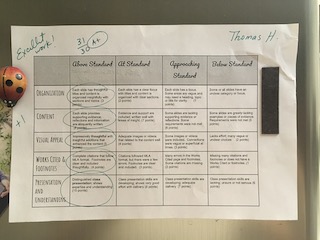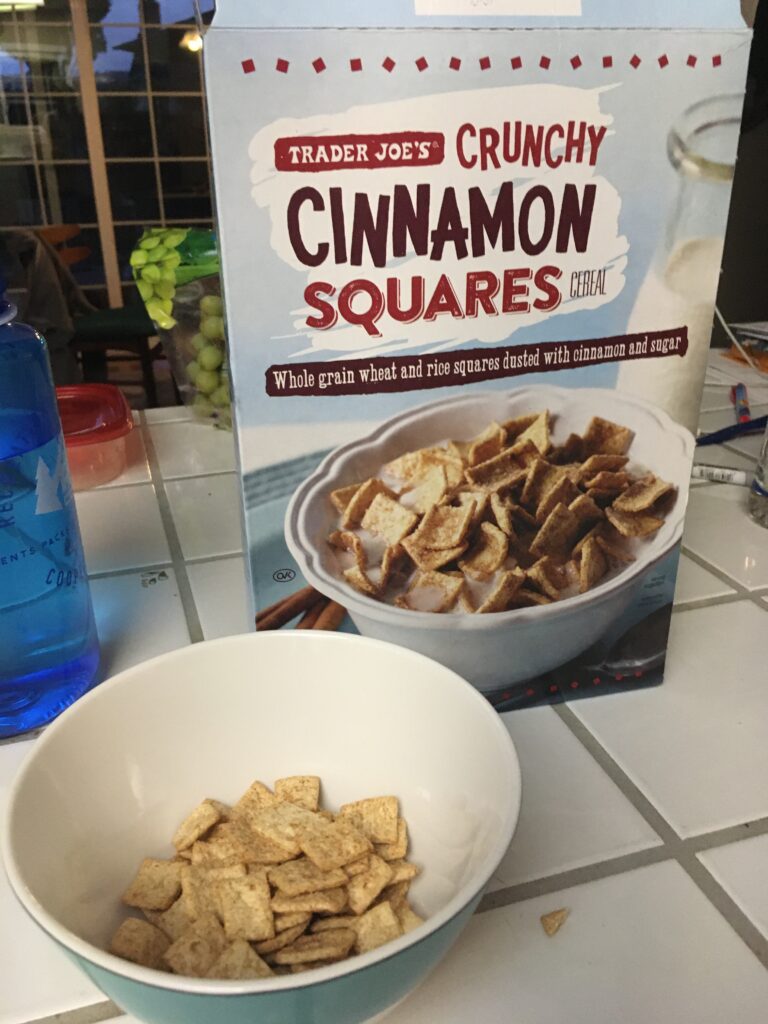Digitization is the “conversion of an analogue signal or code into a digital signal or code.”[1] The creation of digital representations of historical and cultural documents and artifacts is now commonplace in public history institutions. In an effort to better understand how objects are rendered, I digitized items in my kitchen using photography and video: a child’s rubric that hangs on the refrigerator, a coffee pot, a measuring cup with cereal, a bowl with cereal, and an oven pad.
- What can you capture, and not capture, when you digitize something?
When we digitize materials, we capture a rendering of their informational qualities. We are particularly good at capturing textual documents and the information that they carry. These images, nonetheless, are shaped by the digitization process. Digital photographs and videos of objects do capture some color and texture, as well as some sense of size (especially if there is an object for scale included). But the captured image can seem deceptively complete and accurate. In addition, we do not see digitized objects as they are used or understood by people in their environment.
- Which forms of digitization make the most sense for different types of items?
Scanning or photographing one-dimensional objects is a relatively simple and useful way to capture information. Textual images can be read via Optical Character Recognition (OCR), the process that converts an image of text into a machine-readable text format, and therefore are accessible for text-to-speech apps. Even here, however, the technology limits us to reading those words that align on the page in sharp contrast to the page. In scanning my son’s rubric for a class presentation, I found that Google’s OCR text creation software read the rubric well but that it placed the final heading in the rubric out of order. And while it could read the teacher’s hand-printed markings if they were straight, it failed to capture her “excellent” and the award of +1 bonus point since these were in cursive and written at an angle.

The scan or still image also does not show us how the object is used in real life. As information science professor Paul Conway explains, we really do not have any digital images that are not mediated. Decisions are made about spatial composition and lighting before the digital image is created. Then images are cropped and resized, their tone adjusted, and sometimes blemishes are removed.[2] At minimum, the viewer of historical images online does not relate with an object via electronic technologies as an original owner would. For the child’s rubric, we cannot see the other kinds of photographs and projects that are on the refrigerator and we don’t see the back side of the image where a teacher wrote an encouraging message.
In at least some instances, video better captures three-dimensional objects. When I created a digital image of my coffee pot, the image displays the appliance and the coffee pot as flat. Contrast is also a problem because the coffee and the appliance are dark. The viewer cannot see the shape of the coffee maker or how much coffee is in the carafe. The video of the coffee pot allows the viewer to gather more detail. One can see all sides of the appliance and its round shape. One can see how much coffee is left in the pot and the markings on the carafe. We still cannot smell the coffee or hear it percolating, but one could create a video demonstrating the pot’s use in its particular place and time.
- To what extent does working with digitized representations impact how we understand different kinds of items, and/or our ability to use them for different purposes?
Digitization may provide us with a false sense of knowledge about objects and history itself. In a simple case, when I created digital images of a measuring cup and a bowl of cereal, I took the image from above. The stripes of color on the side of the bowl are not visible. Without reflection, a viewer would likely assume the bowl is entirely white.


Similarly, when historians view items extracted from their archival collections and outside of their historical setting, they may miss the context. We must be sure that we do the work of researching and understanding the context of objects and photos that are digitized. As historian Lara Putnam argues, “Gazing at the past through the lens of the digitizable makes certain phenomena prominent and others less so, renders certain people vividly visible and others vanishingly less so.” In other words, while digital archives grant us access to far-flung materials, they still capture limited sources, especially text from the Anglophone world. We must ask who “stand[s] in the shadows that digitized sources cast.”[3]
[1] Melissa Terras, “Digitisation and Digital Resources in the Humanities” (2012).
[2] Paul Conway, “Building Meaning in Digitized Photographs,” Journal of the Chicago Colloquium on Digital Humanities and Computer Science 1, no. 1 (2009).
[3] Lara Putnam, “The Transnational and the Text-Searchable: Digitized Sources and the Shadows They Cast,” American Historical Review (April 2016): 390-91.